Themed collection 2022 PCCP HOT Articles

Self-assembled systems for artificial photosynthesis
Some key articles that have recently shown the potential of self-assembly for artificial photosynthesis are discussed; it is shown that emerging properties derived from self-assembly can be useful for designing efficient photocatalytic systems.
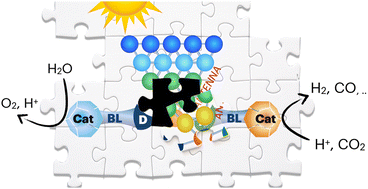
Phys. Chem. Chem. Phys., 2023,25, 1504-1512
https://doi.org/10.1039/D2CP03655J
Liquid crystal random lasers
The enthusiasm for research on liquid crystal random lasers (LCRLs) is driven by their unusual optical properties and promising potential for broad applications in manufacturing, communications, medicine and entertainment.
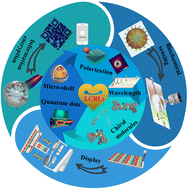
Phys. Chem. Chem. Phys., 2023,25, 48-63
https://doi.org/10.1039/D2CP02859J
Mechanics-based design of lithium-ion batteries: a perspective
The mechanics-based design of lithium-ion batteries during the preparation stage and the cycling stage is reviewed. The general problems currently being faced are summarized, followed by the outlook of possible solutions.
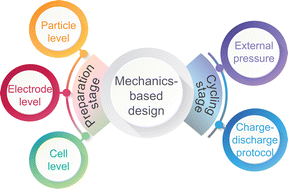
Phys. Chem. Chem. Phys., 2022,24, 29279-29297
https://doi.org/10.1039/D2CP03301A
DFT exchange: sharing perspectives on the workhorse of quantum chemistry and materials science
In this paper, the history, present status, and future of density-functional theory (DFT) is informally reviewed and discussed by 70 workers in the field, including molecular scientists, materials scientists, method developers and practitioners.
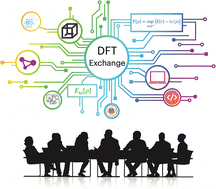
Phys. Chem. Chem. Phys., 2022,24, 28700-28781
https://doi.org/10.1039/D2CP02827A
Ultrafast chirality: the road to efficient chiral measurements
Two roads in the electric–dipole revolution in chiral measurements.
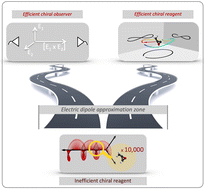
Phys. Chem. Chem. Phys., 2022,24, 26962-26991
https://doi.org/10.1039/D2CP01009G
Strategies and challenges of carbon materials in the practical applications of lithium metal anode: a review
Lithium (Li) metal is strongly considered to be the ultimate anode for next-generation high-energy-density rechargeable batteries. Carbon materials and their composites with excellent structure tunability and properties have shown great potential applications in Li metal anodes.
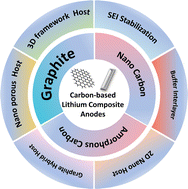
Phys. Chem. Chem. Phys., 2022,24, 26356-26370
https://doi.org/10.1039/D2CP04032H
Trends in angle-resolved molecular photoelectron spectroscopy
In this perspective article, main trends of angle-resolved molecular photoelectron spectroscopy in the laboratory up to the molecular frame, in different regimes of light-matter interactions, are highlighted with emphasis on foundations and most recent applications.

Phys. Chem. Chem. Phys., 2022,24, 24614-24654
https://doi.org/10.1039/D2CP02725A
Noncovalently bound molecular complexes beyond diatom–diatom systems: full-dimensional, fully coupled quantum calculations of rovibrational states
The methodological advances made in recent years have significantly extended the range and dimensionality of noncovalently bound molecular complexes for which full-dimensional quantum calculations of their rovibrational states are feasible.
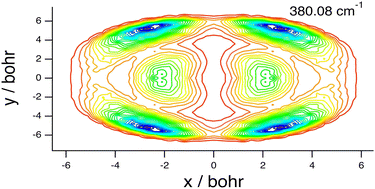
Phys. Chem. Chem. Phys., 2022,24, 24655-24676
https://doi.org/10.1039/D2CP04005K
Geminal-based electronic structure methods in quantum chemistry. Toward a geminal model chemistry
In this review, we discuss the recent progress in developing geminal-based theories for challenging problems in quantum chemistry.
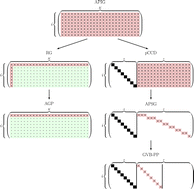
Phys. Chem. Chem. Phys., 2022,24, 23026-23048
https://doi.org/10.1039/D2CP02528K
Biexciton dynamics in halide perovskite nanocrystals
Biexcitons dominate the optical responses of lead halide perovskite nanocrystals and provide a unique way to control and improve the optical gain.

Phys. Chem. Chem. Phys., 2022,24, 22405-22425
https://doi.org/10.1039/D2CP02826C
Understanding the n → π* non-covalent interaction using different experimental and theoretical approaches
A comprehensive perspective of the n → π* non-covalent interaction obtained using various experimental and theoretical approaches is presented.
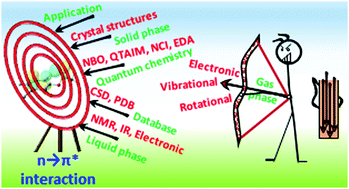
Phys. Chem. Chem. Phys., 2022,24, 22371-22389
https://doi.org/10.1039/D2CP02070J
Optimized plasmonic performances and derivate applications of Au nanobipyramids
Gold nanobipyramids (AuBPs) with narrow size distribution and high monodispersity possess more advantageous plasmonic properties and have been a promising template to fabricate anisotropic multi-metallic nanostructures.
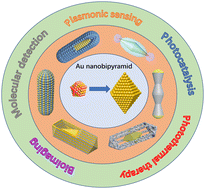
Phys. Chem. Chem. Phys., 2022,24, 21522-21537
https://doi.org/10.1039/D2CP02811E
Differential dynamic microscopy for the characterisation of motility in biological systems
Differential Dynamic Microscopy (DDM) is a relatively new technique which measures the dynamics of suspended particles using a dynamic light scattering formalism.

Phys. Chem. Chem. Phys., 2022,24, 20616-20623
https://doi.org/10.1039/D2CP02034C
The hitchhiker's guide to dynamic ion–solvent clustering: applications in differential ion mobility spectrometry
This article provides atomistic insight into the dynamic microsolvation processes occurring in differential mobility spectrometry (DMS), which can be used to (1) reproduce an ion's DMS behaviour, and (2) predict an ion's condensed-phase properties.
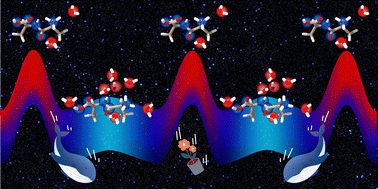
Phys. Chem. Chem. Phys., 2022,24, 20594-20615
https://doi.org/10.1039/D2CP02540J
Time-resolved photoelectron spectroscopy: the continuing evolution of a mature technique
In this perspective, we discuss the current state of the art of time-resolved photoelectron spectroscopy to probe nonadiabatic dynamics, including ab initio approaches for its simulation and new experimental efforts.
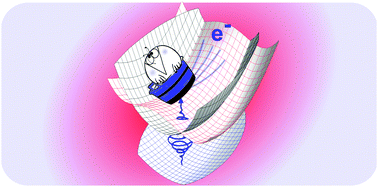
Phys. Chem. Chem. Phys., 2022,24, 20012-20024
https://doi.org/10.1039/D1CP05885A
Velocity correlated emission of secondary clusters by a single surface impact of a polyatomic ion: a new mechanism of cluster emission and subpicosecond probing of extreme spike conditions
Velocity correlated cluster emission (VCCE) effect: all large clusters emitted from a given target following a fullerene ion impact move with nearly the same velocity. A hot moving precursor is proposed as the source of the outgoing clusters.
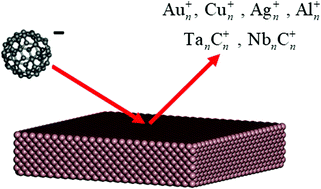
Phys. Chem. Chem. Phys., 2022,24, 19634-19658
https://doi.org/10.1039/D2CP00145D
Exploiting mixed conducting polymers in organic and bioelectronic devices
Mixed ionic-electronic conduction is a critical feature in a wide range of emerging electrochemical devices based on conjugated polymers exploiting transport, coupling, and charge carrier concentration modulation of both electronic and ionic charges.

Phys. Chem. Chem. Phys., 2022,24, 19144-19163
https://doi.org/10.1039/D2CP02595G
Atomically thin 2D photocatalysts for boosted H2 production from the perspective of transient absorption spectroscopy
The efficiency of a 2D photocatalyst is largely dependent on the excited state charge carrier behavior at short time scale, which can be accessed and used for the betterment of the photocatalyst via only transient absorption spectroscopy.
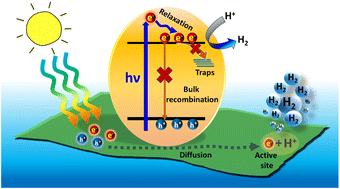
Phys. Chem. Chem. Phys., 2022,24, 19121-19143
https://doi.org/10.1039/D2CP02148J
Advanced cathodic free-standing interlayers for lithium–sulfur batteries: understanding, fabrication, and modification
This perspective demonstrates the novelty of the understanding, fabrication, notification and outlook of the free-standing cathodic interlayer in Li-S batteries.
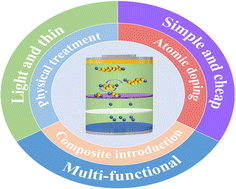
Phys. Chem. Chem. Phys., 2022,24, 17383-17396
https://doi.org/10.1039/D2CP02097A
The evolution of paramagnetic NMR as a tool in structural biology
Paramagnetic NMR observables provide accurate long-range structural information and act as a loupe on the metal coordination site.

Phys. Chem. Chem. Phys., 2022,24, 17397-17416
https://doi.org/10.1039/D2CP01838A
Atom–surface scattering in the classical multiphonon regime
Many experiments that utilize beams of incident atoms colliding with surfaces as a probe of surface properties are carried out at large energies, high temperatures and with large mass atoms.

Phys. Chem. Chem. Phys., 2022,24, 16942-16972
https://doi.org/10.1039/D2CP01144A
Grazing incidence fast atom and molecule diffraction: theoretical challenges
In this article, we review the theoretical methods used to simulate and analyze grazing-incidence fast atom and molecule diffraction, focusing on their weaknesses and strengths, as well as the theoretical challenges that still need to be addressed.
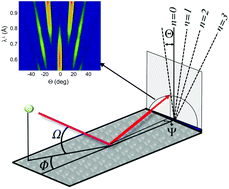
Phys. Chem. Chem. Phys., 2022,24, 15628-15656
https://doi.org/10.1039/D2CP01246D
Computational vibrational spectroscopy of molecule–surface interactions: what is still difficult and what can be done about it
Anharmonic effects are important in adsorbed molecules even as harmonic calculations continue to dominate computed vibrational spectra in applications. We consider perspectives of application of anharmonic methods to adsorbed molecules.
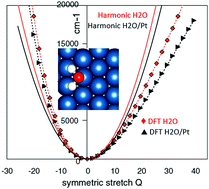
Phys. Chem. Chem. Phys., 2022,24, 15158-15172
https://doi.org/10.1039/D2CP01389D
Supraballs as spherical solid 3D superlattices of hydrophobic nanocrystals dispersed in water: nanoarchitectonics and properties
Nanoheaters: FCC solid spherical nanocrystal assemblies either dispersed in solution or internalized in tumor cells.

Phys. Chem. Chem. Phys., 2022,24, 14140-14149
https://doi.org/10.1039/D2CP00566B
Ab initio calculation of X-ray and related core-level spectroscopies: Green's function approaches
Green's function approaches facilitate efficient and accurate calculations of X-ray spectra that include key many-body effects.
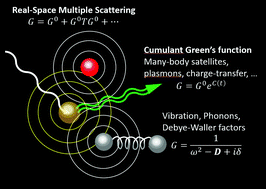
Phys. Chem. Chem. Phys., 2022,24, 13461-13473
https://doi.org/10.1039/D2CP01167K
Photoionization of the aqueous phase: clusters, droplets and liquid jets
This perspective article reviews specific challenges associated with photoemission spectroscopy of bulk liquid water, aqueous solutions, water droplets and water clusters.
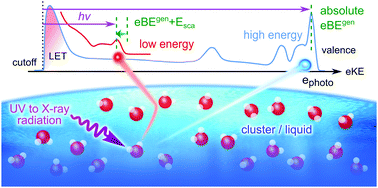
Phys. Chem. Chem. Phys., 2022,24, 13438-13460
https://doi.org/10.1039/D2CP00164K
Current understanding and insights towards protein stabilization and activation in deep eutectic solvents as sustainable solvent media
Deep eutectic solvents (DESs) have emerged as a new class of green, designer and biocompatible solvents, an alternative to conventional organic solvents and ionic liquids (ILs) which are comparatively toxic and non-biodegradable.
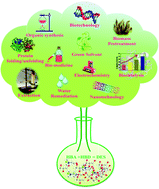
Phys. Chem. Chem. Phys., 2022,24, 13474-13509
https://doi.org/10.1039/D2CP00084A
Advances in the OCEAN-3 spectroscopy package
An overview of the OCEAN code for calculating near-edge X-ray spectroscopy, including X-ray absorption and resonant inelastic X-ray scattering, using the Bethe-Salpeter equation approach.
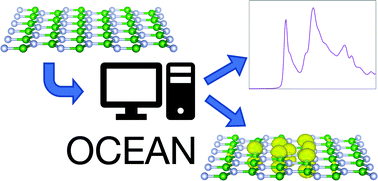
Phys. Chem. Chem. Phys., 2022,24, 12787-12803
https://doi.org/10.1039/D2CP01030E
Chemical potential, derivative discontinuity, fractional electrons, jump of the Kohn–Sham potential, atoms as thermodynamic open systems, and other (mis)conceptions of the density functional theory of electrons in molecules
Objections are raised against the straight-line behavior of the energy for fractional electron number and its basis in thermodynamical (grand canonical ensemble) considerations. It is not “the exact DFT for noninteger electron systems”.

Phys. Chem. Chem. Phys., 2022,24, 12745-12766
https://doi.org/10.1039/D2CP01585D
Understanding specific ion effects and the Hofmeister series
This perspective reviews the historical explanations for specific ion effects, and explores the frontiers of the field before summarising its challenges and opportunities.
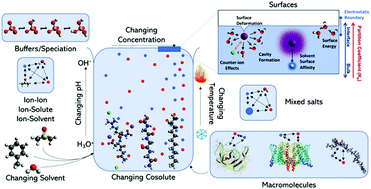
Phys. Chem. Chem. Phys., 2022,24, 12682-12718
https://doi.org/10.1039/D2CP00847E
Quantitative molecular simulations
All-atom simulations can provide molecular-level insights into the dynamics of gas-phase, condensed-phase and surface processes.
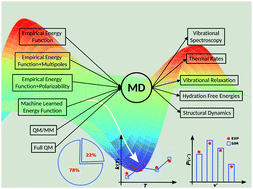
Phys. Chem. Chem. Phys., 2022,24, 12767-12786
https://doi.org/10.1039/D2CP01211A
On surface chemical reactions of free-base and titanyl porphyrins with r-TiO2(110): a unified picture
Free-base porphyrins on TiO2(110) anchor to Obr rows, where they capture diluted hydrogen underneath and favour outdiffusion of Ti interstitials by self-metalation; Ti metalated species may also capture oxygen from hydroxyl adsorbates on Ti5f rows.
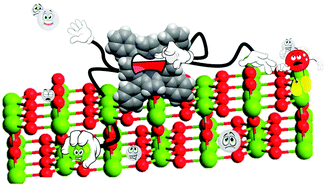
Phys. Chem. Chem. Phys., 2022,24, 12719-12744
https://doi.org/10.1039/D2CP01073A
Setting up the HyDRA blind challenge for the microhydration of organic molecules
The first theory blind challenge addressing the effect of microsolvation on water vibrations is launched.
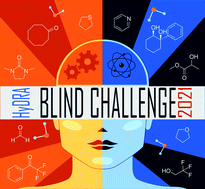
Phys. Chem. Chem. Phys., 2022,24, 11442-11454
https://doi.org/10.1039/D2CP01119K
Laser pulses into bullets: tabletop shock experiments
A tabletop pulsed laser can launch a hypervelocity flyer plate to create high temperatures and pressures in a nanosecond in an array of solid or liquid samples.
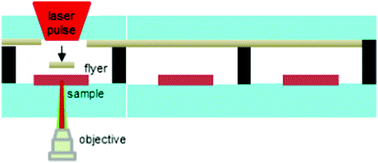
Phys. Chem. Chem. Phys., 2022,24, 10653-10666
https://doi.org/10.1039/D2CP00418F
Multiscale computational investigations of the translesion synthesis bypass of tobacco-derived DNA adducts: critical insights that complement experimental biochemical studies
Computational modelling complements experimental biochemical studies on DNA adduct mutagenicity by providing structural insights for a diverse set of lesions resulting from tobacco products.
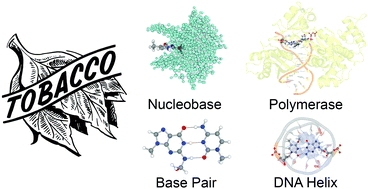
Phys. Chem. Chem. Phys., 2022,24, 10667-10683
https://doi.org/10.1039/D2CP00481J
Reaction dynamics within a cluster environment
This perspective article reviews experimental and theoretical works where rare gas clusters and helium nanodroplets are used as a nanoreactor to investigate chemical dynamics in a solvent environment.
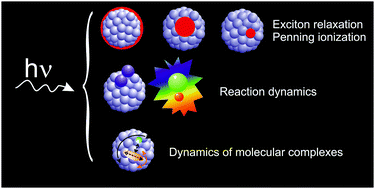
Phys. Chem. Chem. Phys., 2022,24, 9807-9835
https://doi.org/10.1039/D1CP05783A
Small-molecule ambipolar transistors
Small-molecule materials showing ambipolar transistor properties are reviewed.

Phys. Chem. Chem. Phys., 2022,24, 9770-9806
https://doi.org/10.1039/D1CP05799E
Zooming in on the initial steps of catalytic NO reduction using metal clusters
The study of reactions relevant to heterogeneous catalysis on metal clusters with full control over the number of constituent atoms and elemental composition can lead to a detailed insight into the interactions governing catalytic functionality.
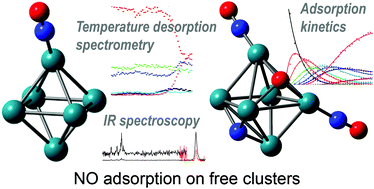
Phys. Chem. Chem. Phys., 2022,24, 7595-7610
https://doi.org/10.1039/D1CP05760J
Metal-nanocluster science and technology: my personal history and outlook
This personal account describes my motivation for each previous subject on metal nanoclusters, what type of research I want to perform, and how I consider the outlook of the field.
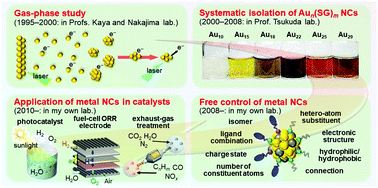
Phys. Chem. Chem. Phys., 2022,24, 7569-7594
https://doi.org/10.1039/D1CP05689A
Electromagnetic bioeffects: a multiscale molecular simulation perspective
We summarise methodologies, challenges and opportunities for theoretical modelling to advance current understanding of electromagnetic bioeffects for biomedicine and industry.
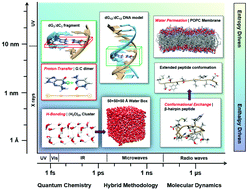
Phys. Chem. Chem. Phys., 2022,24, 6327-6348
https://doi.org/10.1039/D1CP05510K
Electron diffraction as a structure tool for charged and neutral nanoclusters formed in superfluid helium droplets
Electron diffraction of clusters doped in superfluid helium droplets is an in situ technique for cluster synthesis and atomic structure determination. Both neutral and ionic nanoclusters can be investigated with proper care of the helium background.
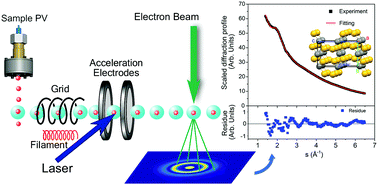
Phys. Chem. Chem. Phys., 2022,24, 6349-6362
https://doi.org/10.1039/D2CP00048B
Multi-resolution simulation of DNA transport through large synthetic nanostructures
A new combination of coarse-grained modeling and finite element calculations enable rapid and accurate characterization of DNA transport through nanostructures of diverse geometries.
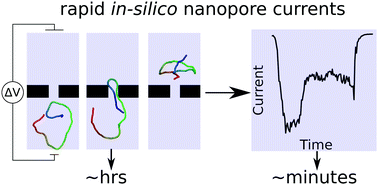
Phys. Chem. Chem. Phys., 2022,24, 2706-2716
https://doi.org/10.1039/D1CP04589J
Palladium clusters, free and supported on surfaces, and their applications in hydrogen storage
Palladium clusters enhance the hydrogen storage of nanoporous carbons.
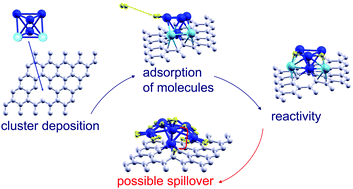
Phys. Chem. Chem. Phys., 2022,24, 2729-2751
https://doi.org/10.1039/D1CP03524J
Photoelectron spectroscopy in molecular physical chemistry
Photoelectron spectroscopy has evolved into a powerful tool for physical chemistry and molecular physics. Some recent examples are highlighted in this perspective.
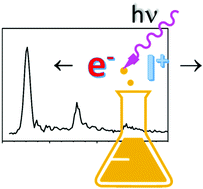
Phys. Chem. Chem. Phys., 2022,24, 1944-1959
https://doi.org/10.1039/D1CP04984D
On the vibrations of formic acid predicted from first principles
In this article, we review recent first principles, anharmonic studies on the molecular vibrations of gaseous formic acid in its monomer form.
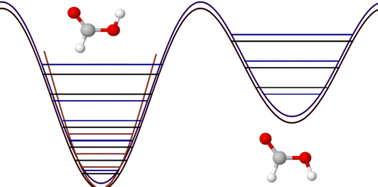
Phys. Chem. Chem. Phys., 2022,24, 28109-28120
https://doi.org/10.1039/D2CP04417J
Functional groups in graphene oxide
Graphene oxide consists of diverse surface chemistry which allows tethering GO with additional functionalities and tuning its intrinsic properties. This review summarizes recently advanced methods to covalently modify GO for specific applications.
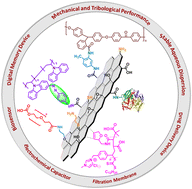
Phys. Chem. Chem. Phys., 2022,24, 26337-26355
https://doi.org/10.1039/D2CP04082D
Photoelectron–photoion(s) coincidence studies of molecules of biological interest
Photoelectron–photoion(s) coincidence, PEPICO, experiments with synchrotron radiation have become one of the most powerful tools to investigate dissociative photoionization thanks to their selectivity.
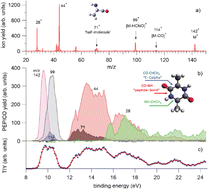
Phys. Chem. Chem. Phys., 2022,24, 22356-22370
https://doi.org/10.1039/D2CP03079A
Recent advances in dendrite-free lithium metal anodes for high-performance batteries
This review provides an overview of the significant progresses that occur on lithium metal anodes for lithium metal batteries. Some modification strategies and in situ characterization approaches are discussed.

Phys. Chem. Chem. Phys., 2022,24, 19996-20011
https://doi.org/10.1039/D2CP01655A
Perspective on interface engineering for capacitive energy storage polymer nanodielectrics
Polymer nanodielectrics with high breakdown strength (Eb), high energy density (Ue) and low energy loss have great potential to be used as capacitive energy storage materials of high-voltage film capacitors in modern electrical and electronic equipment, such as smart grids, new energy vehicles and pulse powered weapons.
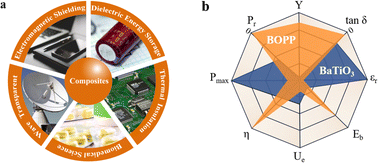
Phys. Chem. Chem. Phys., 2022,24, 19624-19633
https://doi.org/10.1039/D2CP02783F
Theoretical study of macrocyclic host molecules: from supramolecular recognition to self-assembly
In this review, we take heteroatom-bridged heteroaromatic calixarene, cucurbituril and cyclodextrin as examples, and summarize the recent progress in the molecular recognition and self-assembly of macrocyclic host molecules by multiscale modelling.
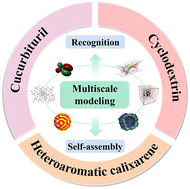
Phys. Chem. Chem. Phys., 2022,24, 19011-19028
https://doi.org/10.1039/D2CP02152H
Exploring the materials space in the smallest particle size range: from heterogeneous catalysis to electrocatalysis and photocatalysis
Minireview on ultrasmall subnanometer clusters driving chemical transformations in heterogeneous catalysis, electrocatalysis and photocatalysis.
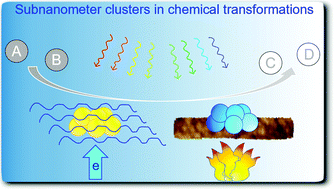
Phys. Chem. Chem. Phys., 2022,24, 12083-12115
https://doi.org/10.1039/D1CP05677H
Violations to the principle of least motion: the shortest path is not always the fastest
The shortest reaction path is not always that of lowest activation energy.
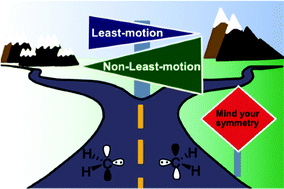
Phys. Chem. Chem. Phys., 2022,24, 8064-8075
https://doi.org/10.1039/D2CP00700B
Simulating electric field and current density in nanostructured electrocatalysts
This tutorial review presents the theory, models, and protocols for the simulation of electrochemical properties of nanoelectrocatalysts with complex morphologies using the finite element method.
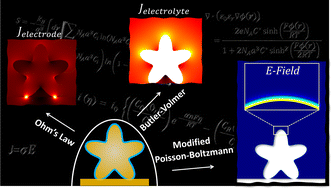
Phys. Chem. Chem. Phys., 2022,24, 25695-25719
https://doi.org/10.1039/D2CP02846H
Infrared spectroscopic monitoring of solid-state processes
We put a spotlight on IR spectroscopic investigations in materials science by providing a critical insight into the state of the art, covering both fundamental aspects, examples of its utilisation, and current challenges and perspectives focusing on the solid state.
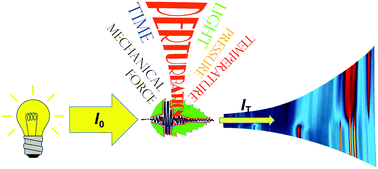
Phys. Chem. Chem. Phys., 2022,24, 19073-19120
https://doi.org/10.1039/D2CP01458K
Designing 3d metal oxides: selecting optimal density functionals for strongly correlated materials
First-row TMOs have remarkable properties that are appealing in materials design for technological applications. Their electronic structure can be modelled with DFT, but this requires careful considerations due to strong correlation effects of 3d orbitals.
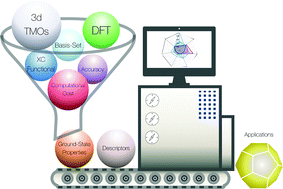
Phys. Chem. Chem. Phys., 2022,24, 14119-14139
https://doi.org/10.1039/D2CP01303G
Multiscale molecular modelling: from electronic structure to dynamics of nanosystems and beyond
This tutorial review provides an introduction to multiscale modelling of complex chemical, physical and biological processes through case studies, aimed at beginning researchers and more senior colleagues who are changing direction to focus on multiscale aspects of their research.
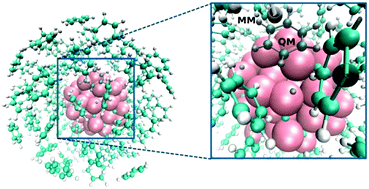
Phys. Chem. Chem. Phys., 2022,24, 9051-9081
https://doi.org/10.1039/D1CP05928A
Pyrene aggregation at unprecedented low concentrations in (lanthanide metal salt + urea) deep eutectic solvents
Unprecedented intermolecular aggregation of pyrene at micromolar concentration level within neat lanthanide metal based-deep eutectic solvents.
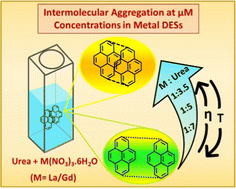
Phys. Chem. Chem. Phys., 2023,25, 64-68
https://doi.org/10.1039/D2CP05155A
Synthesis of graphdiyne on a copper substrate via a self-coupling reaction
The preparation of graphdiyne via the self-coupling reaction of hexakis(bromoethynyl)benzene (hBEP) with alkynyl bromide groups is reported, where the reaction can proceed moderately in 12 h at room temperature.

Phys. Chem. Chem. Phys., 2023,25, 69-73
https://doi.org/10.1039/D2CP04384J
Does boron or nitrogen substitution affect hydrogen physisorption on open carbon surfaces?
Despite the expected influence of heteroatom substitution in carbon materials, no technologically significant effect was identified for H2 physisorption energies.
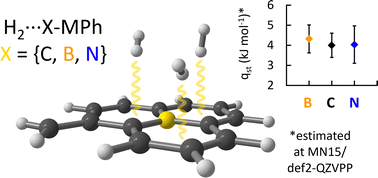
Phys. Chem. Chem. Phys., 2022,24, 28121-28126
https://doi.org/10.1039/D2CP03975C
Meta-stability through intermolecular interactions protecting the identity of atomic metal clusters: ab initio evidences in (Cu5–Cu5)n (n < 3) cases
Recent developments in new synthesis techniques have allowed the production of precise monodisperse metal clusters composed of a few atoms. The study of these clusters represents a challenge for theoretical investigations.

Phys. Chem. Chem. Phys., 2022,24, 26992-26997
https://doi.org/10.1039/D2CP03537E
Detection of the tetrahedral reaction intermediate of the reaction of acetyl chloride with ethanol in microdroplets via laser desorption/ionization tandem mass spectrometry
The controversial tetrahedral intermediate of the reaction between acetyl chloride and ethanol was detected using novel methodology. The results demonstrate that the reaction proceeds via an addition/elimination mechanism.
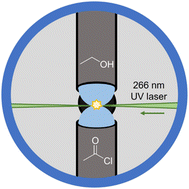
Phys. Chem. Chem. Phys., 2022,24, 24690-24694
https://doi.org/10.1039/D2CP03518A
Molecular partition coefficient from machine learning with polarization and entropy embedded atom-centered symmetry functions
Efficient prediction of the partition coefficient (log P) between polar and non-polar phases could shorten the cycle of drug and materials design.
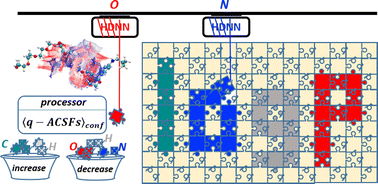
Phys. Chem. Chem. Phys., 2022,24, 23082-23088
https://doi.org/10.1039/D2CP02648A
Being negative can be positive: metal oxide anions promise more selective methane to methanol conversion
Quantum chemical calculations show that ligated metal oxide anions can convert methane to methanol efficiently and facilitate the release of methanol from the metal center preventing its further oxidation.

Phys. Chem. Chem. Phys., 2022,24, 21583-21587
https://doi.org/10.1039/D2CP02771B
Kinetics of the interfacial curing reaction for an epoxy–amine mixture
A chemical reaction between epoxy and amine compounds at an outermost solid interface was studied by sum-frequency generation spectroscopy, X-ray and neutron reflectivity and a full atomistic molecular dynamics simulation.

Phys. Chem. Chem. Phys., 2022,24, 21578-21582
https://doi.org/10.1039/D2CP03394A
Mesoporous TiO2 layer suppresses ion accumulation in perovskite solar cells
The TiO2-nanoparticle scaffold suppresses ion accumulation in mesoporous perovskite solar cells by reducing the electrostatic interaction between the conductive substrate and the perovskite active layer.
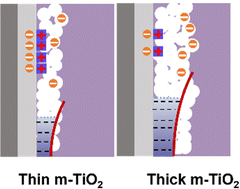
Phys. Chem. Chem. Phys., 2022,24, 20689-20693
https://doi.org/10.1039/D2CP02037H
Design and applications of water irradiation devoid RF pulses for ultra-high field biomolecular NMR spectroscopy
Water devoid RF pulses designed by an evolutionary algorithm and AI improve solvent suppression and increase the NMR spectra sensitivity.
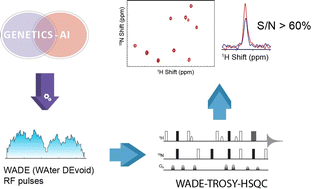
Phys. Chem. Chem. Phys., 2022,24, 18477-18481
https://doi.org/10.1039/D2CP01744J
Transition between growth of dense and porous films: theory of dual-layer SEI
The film-growth model predicts a morphology-driven dual-layer structure due to slowing down of electron diffusion through the SEI.
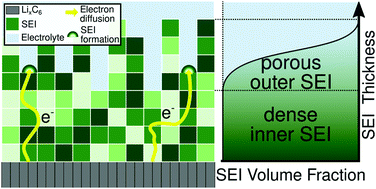
Phys. Chem. Chem. Phys., 2022,24, 18469-18476
https://doi.org/10.1039/D2CP00188H
Variation of bending rigidity with material density: bilayer silica with nanoscale holes
Helium atom scattering experiments on a “holey” silica bilayer film reveal that the bending rigidity of the material, extracted from phonon dispersion curves, decreases with decreasing material density.
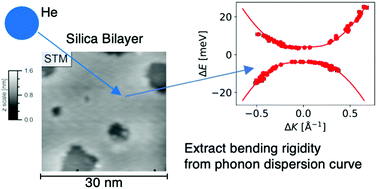
Phys. Chem. Chem. Phys., 2022,24, 17941-17945
https://doi.org/10.1039/D2CP01960D
B96: a complete core–shell structure with high symmetry
A complete core–shell B96 is highly symmetric (Th) and stable, and exhibits a superatomic electronic configuration and spherical aromaticity.
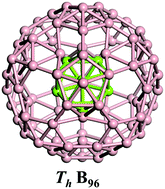
Phys. Chem. Chem. Phys., 2022,24, 15687-15690
https://doi.org/10.1039/D2CP01865A
Nucleophilicity of the boron atom in compounds R–B, (R = F, Cl, Br, I, CN, NC, CH3, SiH3, CF3, H): a new look at the inductive effects of the group R
Nucleophilicities NR–B of molecules R–B (R = F, Cl, Br, I, CN, NC, CH3, SiH3, CF3, H) are determined from the equilibrium dissociation energies De of 70 hydrogen-bonded complexes R–B⋯HX (X = F, Cl, Br, I, HCN, HCCH, HCP).

Phys. Chem. Chem. Phys., 2022,24, 12804-12807
https://doi.org/10.1039/D2CP01565J
About this collection
Welcome to our online rolling collection of the hottest work published in PCCP. Here we feature all of the 2022 articles highlighted as HOT by our Editors and Referees. Congratulations to all those featured!